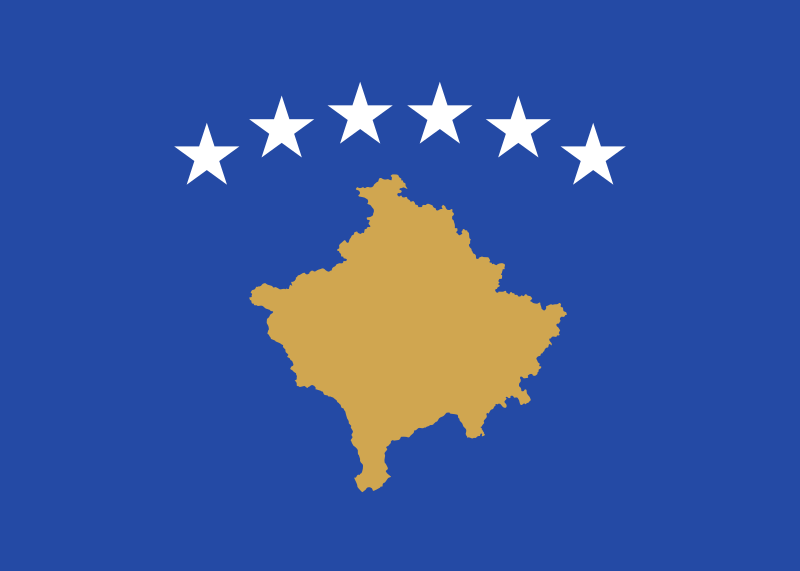General Information
Population
6.591.600 (World Bank 2020)
6.636.800 (STAT KG 2021 June 1)
Immigration
199.011 (UN DESA Immigration Stock 2020)
5.822 (STAT KG 2020)
Emigration
774.377 (UN DESA Emigration Stock 2020)
961 (STAT KG 2020)
Working-age population
4.127.875 (World Bank 2020)
4.113.295 (STAT KG 2021)
Unemployment rate
7.9% (World Bank 2020)
5.8% (STAT KG 2020)
GDP
7,735.98 mln, current prices USD (World Bank 2019)
598.344.5 mln, current prices SOM (STAT KG 2020)
Migration Authorities
Responsible Body
Line Ministries
Agencies
Key Policy Documents
2006 (2020) Law on External Labour Migration
2007 (2016) Law on Citizenship
1993 (2020) Law on the Legal Status of Foreign Citizens
2005 (2018) Law on Preventing and Combatting Trafficking in Human Beings
2007 (2015) Law on state guarantees for ethnic Kyrgyz migrating to the Kyrgyz Republic
Concept of the migration policy of the Kyrgyz Republic for 2021-2030
Relevant Publications
Extender Migration Profile 2015-2018
Extended Migration Profile 2011
Analytical Report ‘Combating irregular migration and human trafficking in the CIS countries’
Background Note ‘Asylum seekers from the Eastern Partnership and Central Asian Countries in the EU’
Policy Brief ‘The EU Central Asia Strategy and Its Impact on Migration’
Analytical Report ‘Addressing the Challenges of Labour Migration within the EAEU’
Description
The Kyrgyz Republic is predominantly a country of emigration. Over the past decade, however, both out-migration from and in-migration to the country declined considerably. While the net migration remains negative, the population of Kyrgyzstan is growing at 2 % per year due to high fertility rates, placing the country among the fastest growing in Asia, after Afghanistan, Tajikistan, Iraq, Pakistan and Yemen.
According to the Statistical Committee of Kyrgyzstan, the number of persons who left the country for permanent residence abroad decreased from over 45,000 in 2011 to 5,822 in 2020. In ethnic terms, migration outflows are essentially comprised of Kyrgyz, Russians, Uzbeks and Germans. Russia and Kazakhstan continue to represent the two main countries of destination. Moreover, the two countries are home to the largest Kyrgyz communities abroad along with Germany, Ukraine and Tajikistan.
While permanent migration is less widespread, temporary labour migration flows from Kyrgyzstan remain considerable. Similar to the overall migration flows, labour migrants primarily target Russia (some 80 %) and Kazakhstan (up to 10 %; it attracted more Kyrgyz labour migrants in 2020). Other destinations include Turkey, the Republic of Korea, and the United Arab Emirates. According to the Eurasian Economic Commission, the number of Kyrgyz migrant workers in Russia exceeds 300,000 persons since 2015. The only exception was the year 2020 when the flow dropped below 200,000. Moreover, 2015 and 2019 saw peak numbers surpassing 500,000 and 450,000 respectively. Almost 40 % of Kyrgyz labour migrants in Russia are women employed in the services, catering, textile and domestic sectors with many of them working informally. Within the EU, Czechia and Poland were issuing the most first-time residence permits for remunerated activities to Kyrgyz nationals in 2017-2019. Meanwhile, Italy and Germany host the majority of Kyrgyz holders of residence permits issued for work purposes valid for one year or more.
Overall, labour migration is an integral part of the subsistence of many Kyrgyz families that rely heavily on remittances, which account for nearly 30 % of the country’s GDP. Experts argue that around one million Kyrgyz nationals of working age support their families by working abroad. Their decision to migrate arises primarily from economic motives such as the lack of employment and low wages at home. Out-migration for other reasons is much smaller in scale. For comparison, over the past three years, only 5,000-6,000 Kyrgyz nationals received residence permits for family reunification inside the EU. In the first half of 2021, only 79,000 Kyrgyz nationals entered Russia for purposes other than work, representing 17 % of the overall flow from Kyrgyzstan to Russia. Since 2015, neither the number of Kyrgyz asylum-seekers nor the number of Kyrgyz refugees exceeded 3,000 persons respectively, with the majority hosted by the US.
Immigration to Kyrgyzstan for permanent residence is insignificant. In 2020, it reached a historical minimum of 960 persons, mostly originating from Tajikistan, Uzbekistan and Russia. The same year, the number of labour migrants who came to the Republic under the allocated annual quota amounted to some 10,000 persons, of whom over 60 % came from China and 14 % from Turkey. As a rule, Chinese nationals make up the majority of labour migrants in Kyrgyzstan, working in the industry, construction, transport, energy, mining, and catering, as well as on joint Sino-Kyrgyz ventures. Immigration flows to Kyrgyzstan also include ethnic Kyrgyz whose return is supported through the state programme ‘Kairylman’ (returnee). In 2018, the stock of kairylmans living in Kyrgyzstan was estimated at over 35,000.
As of 1 January 2021, Kyrgyzstan also hosted 199 refugees, of whom 84 originate from Afghanistan. In view of the volatile situation in Afghanistan in summer 2021, Kyrgyzstan announced its readiness to host over 1,000 Afghan refugees.
The volume of irregular migration in Kyrgyzstan is limited with less than 400 irregular migrants deported in 2018. Most irregular migrants are CIS nationals violating entry, exit and stay regulations.
In 2021, Kyrgyzstan reformed its state structures and shifted most migration-related responsibilities to the newly formed Ministry of Health and Social Development and the Ministry of Foreign Affairs. While the former will be responsible for refugees, ethnic Kyrgyz and victims of trafficking, the latter will deal with external migration from Kyrgyzstan and support Kyrgyz migrants abroad. In July 2021, the MFA launched a new website meant to assist Kyrgyz labour migrants.
In May 2021, Kyrgyzstan adopted the new Migration Policy Concept 2021-2030, identifying four priority areas. The first aims to improve conditions for citizens, compatriots, immigrants and stateless persons in Kyrgyzstan in educational, labour, professional and cultural terms. The second area aims to utilise the migration potential of the population, compatriots, immigrants and stateless persons for national development. The third area shall protect the rights of Kyrgyz nationals abroad, along with those of immigrants, compatriots and stateless persons inside the country. Finally, the fourth area will support the creation of a safe migration environment. The Concept will be implemented in two stages, each featuring a five-year implementation plan for 2021-2025 and 2026-2030.
- Population: 2 845 955
- Emigration: 43 853
- Immigration: 20 753

- Population: 2 961 900
- Emigration: 31 200
- Immigration: 15 800

- Population: 8 978 929
- Emigration: 101 714
- Immigration: 154 202

- Population: 10 119 100
- Emigration: 1 654
- Immigration: 2 042

- Population: 9 349 645
- Emigration: 20 976
- Immigration: 34 846

- Population: 11 521 238
- Emigration: 102 413
- Immigration: 41 756

- Population: 3 475 000
- Emigration: 1 671 177
- Immigration: 37 100

- Population: 6 838 937
- Emigration: 26 755
- Immigration: 39 461

- Population: 4 047 680
- Emigration: 34 046
- Immigration: 33 414

- Population: 918 000
- Emigration: 17 373
- Immigration: 26 170

- Population: 10 519 913
- Emigration: 19 232
- Immigration: 69 201

- Population: 5 873 420
- Emigration: 50 171
- Immigration: 76 552

- Population: 1 331 796
- Emigration: 12 481
- Immigration: 19 524

- Population: 5 550 066
- Emigration: 13 459
- Immigration: 36 364

- Population: 67 813 396
- Emigration: 29 000
- Immigration: 169 000

- Population: 3 728 600
- Emigration: 74 264
- Immigration: 89 996

- Population: 83 200 000
- Emigration: 966 451
- Immigration: 1 186 702

- Population: 10 432 481
- Emigration: 77 837
- Immigration: 84 221

- Population: 9 689 010
- Emigration: 21 730
- Immigration: 49 069

- Population: 5 011 000
- Emigration: 54 000
- Immigration: 65 200

- Population: 58 983 122
- Emigration: 159 884
- Immigration: 247 526

- Population: 18 984 845
- Emigration: 29 110
- Immigration: 11 447

- Population: 1 798 188
- Emigration: 8 724
- Immigration: 11 543

- Population: 6 636 800
- Emigration: 961
- Immigration: 5 822

- Population: 1 875 757
- Emigration: 12 975
- Immigration: 12 689

- Population: 39 315
- Emigration: 432
- Immigration: 713

- Population: 2 805 998
- Emigration: 25 205
- Immigration: 44 858

- Population: 645 397
- Emigration: 15 959
- Immigration: 25 335

- Population: 519 562
- Emigration: 12 679
- Immigration: 13 885

- Population: 3 542 708
- Emigration: 2 243
- Immigration: 4 223

- Population: 619 211
- Emigration: 6 631
- Immigration: 6 008

- Population: 17 600 000
- Emigration: 142 517
- Immigration: 250 792

- Population: 2 097 319
- Emigration: 1 082
- Immigration: 1 848

- Population: 5 435 536
- Emigration: 34 297
- Immigration: 53 947

- Population: 38 914 000
- Emigration: 8 780
- Immigration: 13 263

- Population: 10 344 802
- Emigration: 68 209
- Immigration: 111 311

- Population: 19 186 201
- Emigration: 192 631
- Immigration: 163 806

- Population: 146 171 015
- Emigration: 487 672
- Immigration: 594 146

- Population: 6 871 547
- Emigration: 26 858
- Immigration: 11 306

- Population: 5 431 306
- Emigration: 2 428
- Immigration: 17 507

- Population: 2 107 180
- Emigration: 17 745
- Immigration: 36 110

- Population: 47 385 107
- Emigration: 381 724
- Immigration: 530 401

- Population: 10 475 204
- Emigration: 48 284
- Immigration: 90 631

- Population: 8 736 500
- Emigration: 114 600
- Immigration: 165 600

- Population: 9 506 300
- Emigration: 54 495
- Immigration: 40 859

- Population: 84 680 273
- Emigration: 330 289
- Immigration: 677 042

- Population: 6 200 000

- Population: 41 418 717
- Emigration: 19 121
- Immigration: 26 361

- Population: 67 081 000
- Emigration: 334 000
- Immigration: 573 000

- Population: 35 079 200
- Emigration: 13 648
- Immigration: 1 105


